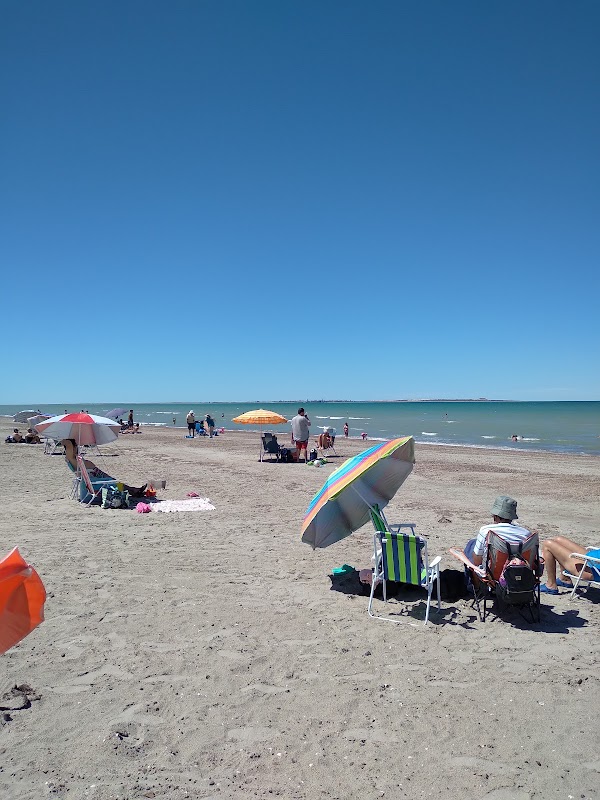
Birdwatching Adventures: Local Workshops in Valcheta, Río Negro
Valcheta in Río Negro offers immersive birding workshops that bring Patagonia's steppe birds to life amid open skies and rolling shrublands. Perfect for both beginners and experienced birders, these workshops combine practical field skills with an opportunity to explore the region’s unique wildlife and landscapes.
Start Early for Active Bird Sightings
Bird activity peaks in the early morning, making dawn departures the best time to spot diverse species and hear clear calls.
Wear Sturdy Footwear
Expect uneven ground across steppe and shrubland; hiking boots with good grip will help maintain balance and comfort.
Bring Adequate Water
Hydration is critical since there are few sources on the trail; carry at least two liters per person.
Use Binoculars and Field Guides
Binoculars enhance detailed bird observation, while field guides aid identification—both improve your workshop experience.
Birdwatching Adventures: Local Workshops in Valcheta, Río Negro
Valcheta, in the heart of Río Negro province, offers birding workshops that blend hands-on learning with fresh air and wide horizons. These workshops unlock the secrets of the Patagonian steppe and local wetlands, places where birds don’t just exist—they own the landscape, their calls threading through open skies and dense shrublands. Whether you're a beginner eager to spot your first raptor or a seasoned birder refining your skills, Valcheta’s birding workshops introduce you to the area's characteristic species, from soaring hawks to elusive tinamous.
Workshops typically start early, matching the rhythms of the birds themselves. Expect to cover 5 to 8 kilometers on varied terrain, including flat steppe with patches of low shrubs and occasional riparian areas near the Valcheta River. Elevation change is minimal (around 150 meters), but uneven ground demands sturdy footwear and a steady pace. Each hike is guided by local experts who read the environment like a book, pointing out subtle feather flashes or distinctive calls that may evade casual listeners.
The workshops keep a practical edge: binoculars and field guides are recommended, as is layered clothing for shifting temperatures. Morning sessions catch the birds at their most active, while afternoon talks focus on bird identification techniques, habitat conservation, and Valcheta’s unique ecological role. Hydration is key; carry at least two liters of water, as access points are limited. Sun protection is essential—the Patagonian sun can be relentless despite the cool air.
You’ll move through the landscape as a careful observer rather than a conqueror, respecting the fierce independence of these creatures amid the open land. The birds seem almost to challenge you—each chirp, flutter, or silhouette a test of attentiveness. Alongside birding, the workshops often highlight local flora such as the huarango shrubs, which shelter nests and frame the steppe’s vastness.
Valcheta’s birding workshops provide more than just an outdoor activity; they offer a window into Patagonia’s wild pulse. Arrive prepared, pace yourself, and let the encounter between you and the winged residents be an exchange of respect and fascination. This focus on learning paired with accessible adventure makes it a vibrant choice for travelers who want to engage deeply with both nature and local knowledge.
Nearby Trips
All Adventures
Boat Charters
Water Activities
Adventures near Valcheta, Río Negro
Discover the unique and memorable adventures that make Valcheta, Río Negro special.
Frequently Asked Questions
What time of day are bird sightings best during the workshops?
Early mornings, typically just after sunrise, offer the highest bird activity as many species forage or call at this time. Workshop schedules often begin around dawn to maximize sightings.
Are the trails suitable for beginners or must I be an experienced hiker?
The trails have minimal elevation gain but uneven terrain due to rocks and shrubs. Beginners with average fitness can participate, but sturdy footwear and a steady pace are important for comfort and safety.
Which bird species are most commonly seen during the workshops?
You can expect to encounter species like the Lesser Rhea, Austral Parakeet, White-throated Cacholote, and various raptors including the American Kestrel and Black-chested Buzzard-Eagle.
Are there any lesser-known spots or viewpoints used during these workshops?
Yes, guides often take participants to overlooked riparian patches along the Valcheta River, where bird diversity spikes, and a small hill called Cerro Paihuen that offers expansive views of the steppe and distant mountain silhouettes.
What wildlife beyond birds might I encounter?
Besides birds, you may spot Patagonian hares, Darwin’s rheas, and small rodents who dart through grasses, as well as seasonal insects that signal ecosystem health.
How do these workshops support local conservation efforts?
They raise awareness about the steppe’s fragile ecosystems and encourage responsible birdwatching practices. Part of the workshop proceeds often contribute to local habitat preservation initiatives.
Recommended Gear
Hiking Boots
Provides support and grip on uneven steppe and shrubland, reducing fatigue and injury risk.
Binoculars
Essential for spotting and identifying birds at a distance without disturbing them.
Sun Protection (hat, sunscreen)
Protects against strong Patagonian sun, especially during midday hikes.
Layered Clothing
Allows adjusting bodily comfort to shifting temperatures common in Patagonian steppe environments.
Local Insights
Hidden Gems
- "Riparian corridors along the Valcheta River for richer bird diversity"
- "Cerro Paihuen hill for panoramic views rarely visited by tourists"
Wildlife
- "Lesser Rhea"
- "Australian Parakeet"
- "White-throated Cacholote"
- "Patagonian hare"
History
"Valcheta has roots in Indigenous Mapuche culture, intertwined with the steppe’s birds that feature in local stories and practices; modern efforts balance cultural heritage with scientific study."
